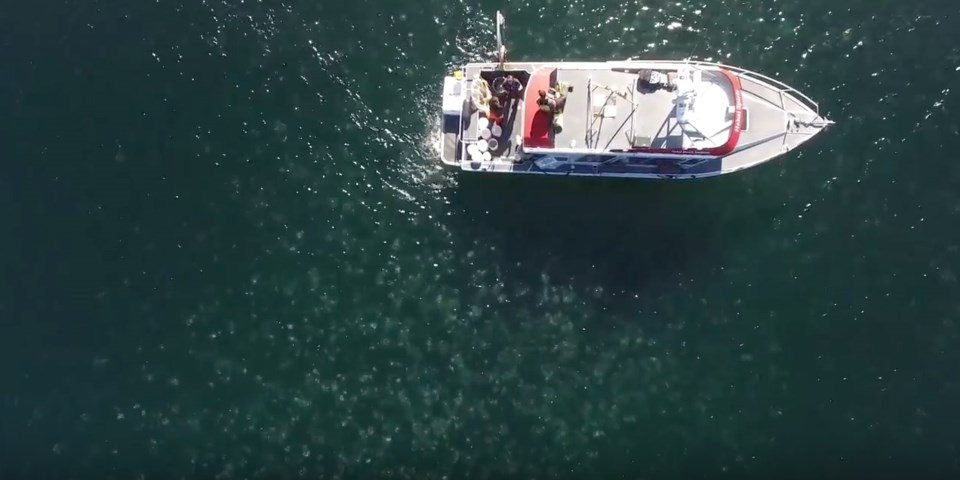It’s not only swimmers who don’t like jellyfish.
The gelatinous coelenterates compete with some species of salmon for food and they’re no friends of herring — one B.C. study reported that they eat up to 95 per cent of herring larvae.
Researchers at UBC are now using drones to find out more about jellyfish and their impact on the aquatic environment.
“Herring spawn in springtime and while jellyfish generally don’t bloom at that time, with warming ocean conditions, the jellyfish could be starting to proliferate earlier in the season,” says Brian Hunt, the UBC Hakai professor in oceanography, says in a university press release. This could "hugely impact the ecology of this area."
Jellyfish – which don’t have a brain, skeleton or central nervous system — use their stinging tentacles to catch their prey (and cause pain to any swimmer who brushes up against one.)
Hunt and his fellow researchers noticed a “marked increase” in the number of moon jellyfish in 2015 and 2016. Those years coincided with the huge warm-water “blob” in the Pacific Ocean and El Nino.
Last year, colder temperatures returned, which may explain why the jellyfish population appeared to shrink in 2017, Hunt says.
Hunt works closely with the Hakai Institute, which has a research station in Pruth Bay, off Calvert Island, which is north of Â鶹´«Ă˝Ół»Island. Summer blooms of moon jellyfish, the most common species they found, have been captured by drone video.
“For the first time, we have very clear and detailed pictures of how jellyfish clusters move, how they behave when freshwater from rivers enters the system, and how they use ocean currents to stay together,” says UBC faculty of science undergraduate Jessica Schaub, who has been working on the project.
“But what’s really exciting is we obtained good estimates of the total mass of jellyfish aggregations in the area — 60 to 120 tonnes of wet weight. That’s a huge amount and it provides a starting point for further studies on jellyfish energy demands and their effect on the local food web.”
shows hundreds of jellyfish just under the water’s surface. Schaub says it’s the first time drones have been used to study jellyfish in this area, providing much better high-definition footage of the jellyfish population and behaviour.



